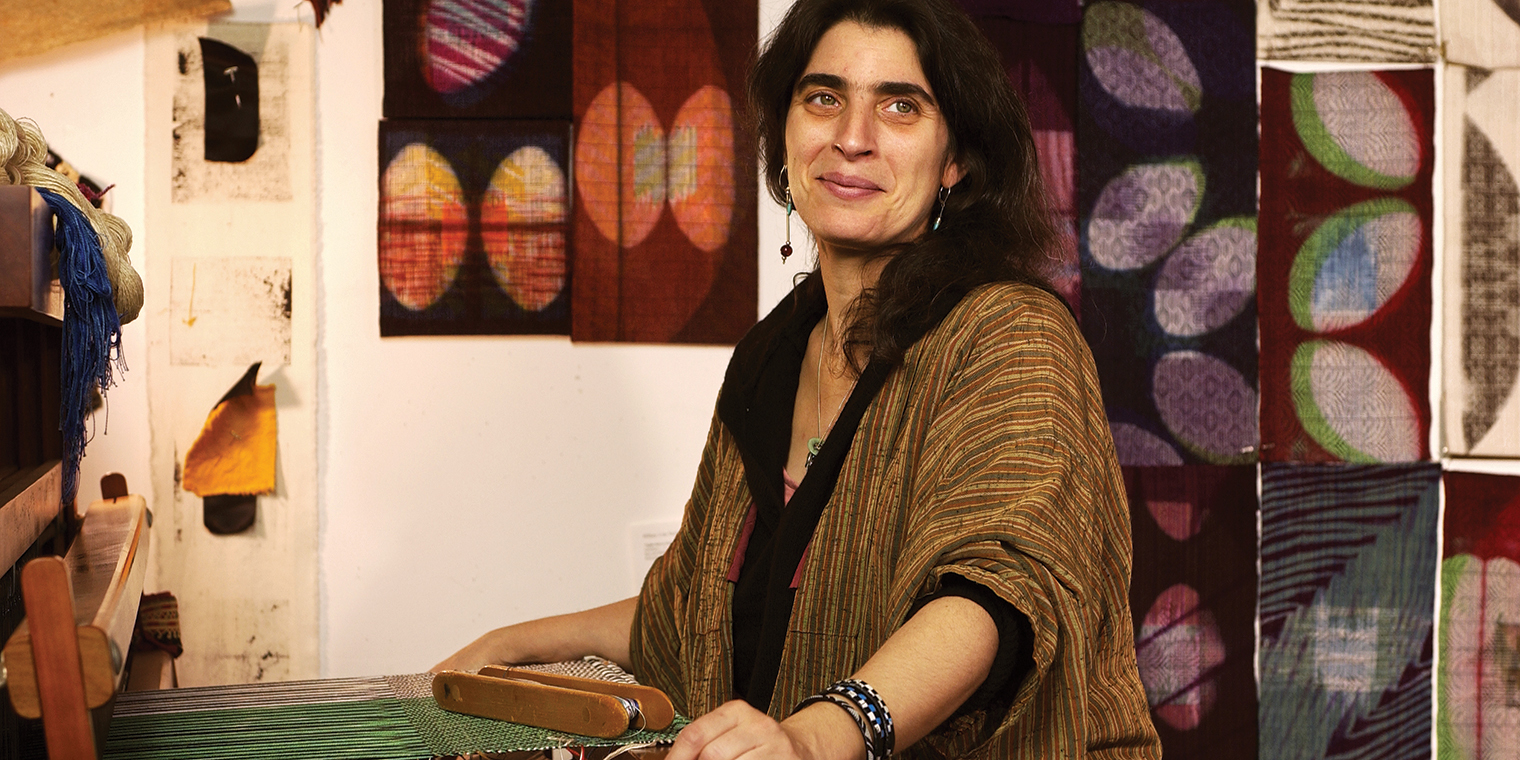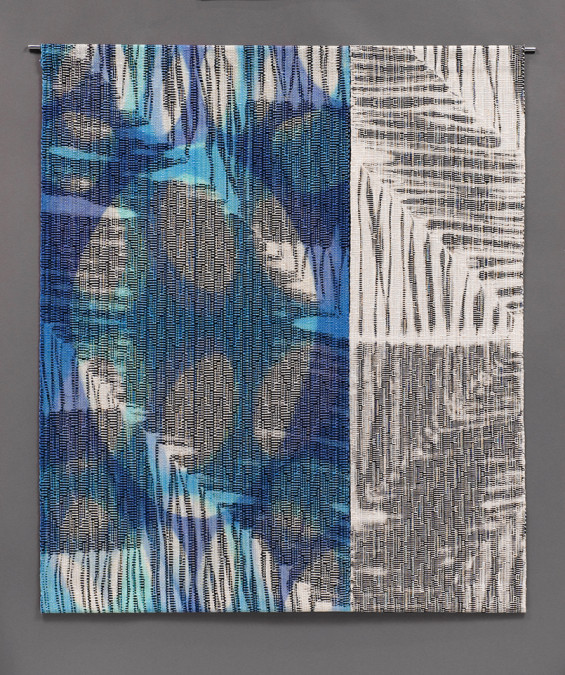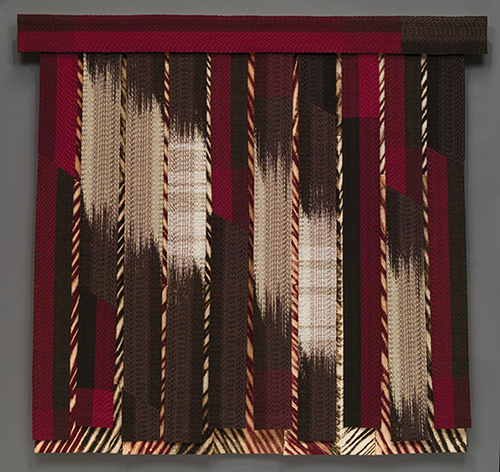When Hillary Steel first took a weaving class in college, she had a strong reaction to it: “I hated it,” she recalls. “But I went back to it and once I started learning it, it was something I gravitated towards.”
Today, Steel specializes in weaving and resist dyeing, incorporating ikat and shibori (jaspe and amarras) into her hand woven wall pieces.
“It’s always surprising. I have 30 years in and I’m still learning things all the time,” she says. “It’s a very engaging technical process and I’ve been able to learn a lot about it over time.”
Steel received a Bachelor of Arts degree from the State University of New York at Buffalo. After graduation, she studied textiles via post-baccalaureate course work at Buffalo State College and the University of Pittsburgh as well as through travel to Cote d’Ivoire, Peru, Chile and Mexico.
“I’ve also studied a lot of traditional textiles from all over the globe—through books, museums and my own travels,” she says. “I enhanced what I learned initially—the technical aspects—and adapted a lot of the approaches I gleaned from world textile history.”
She feels the field is so rich and engaging because of its importance historically.
“For humans, it goes way back, and pretty much everybody all over the world relied on weaving to create what they needed to ease their lives and keep themselves warm,” Steel says. “You learn a lot about anthropology and history and different cultures.”
Over the years, her work has gotten more complex, and a project can take anywhere from a few months to as much as five years to develop and get it just right.
“Generally, I start with some kind of idea and drawings and I find as I work on it, things shift and change and rarely look as I initially intended it,” she says. “I start with black and white thread and I do a lot of black and white dying prior to the threads even getting to the loom.”
Once the weaving begins, Steel imagines the cloth as a canvas, and she sometimes adds more color, cuts the cloth, folds and manipulates and eventually reconstructs it all by stitching it together. On average, she weaves 25 yards of cloth per project.
“I’m inspired by life. I see these as narrative,” Steel says. “They are fairly abstract and I think they’re very common life experiences. They are stories and people should take out of them what they feel.”
During her career, Steel’s work has been included in national and international exhibitions including at the North American Cultural Center in San Jose, Costa Rica, the American Consulate in Tijuana, Mexico, and at our Embassy in Ouagadougou, Burkina Faso. Her textiles have been the subject of solo shows at the Glenview Mansion Art Gallery, the Hoyt Institute of Fine Arts, and the Rosewood Centre Arts Gallery, and are included in the book, “Art on the Edge, Seventeen Contemporary American Artists.”
Since 2006, along with colleague Virginia Davis, Steel has been studying with and documenting the work of Mexican master rebozo weaver Don Evaristo Borboa Casas and the two artists have produced a film about his work.
A textile artist who uses the traditional Mexican backstrap weaving technique to creative contemporary works with a modernist sensibility, Steel is also well known in the McLean community as a longtime art teacher at the Potomac School.
She received a Masters in Teaching degree from the Maryland Institute College of Art in Baltimore and has worked in public and private schools in Pennsylvania, Maryland and the Washington D.C. metropolitan area as an artist in residence, creating site-specific collaborative textiles with students.
“I’ve been teaching in Mexico most recently, and what I try to impart to all of my students is the reverence of the importance of art in culture and the role of the artist,” Steel says. “I think to know how to work with one’s hands and manipulate materials is really important and I fear we’ve kind of lost that a little bit. I do try to get that across to kids in particular.”
The artist has lived in Montgomery County, Maryland since 1994, and maintains a studio in Takoma Park, Washington D.C.
Steel will be exhibiting some of her work at the McLean Community Center’s Emerson Gallery from April 21 through June 4.
“There will be a lot of my large pieces, which rarely get shown together, so that’s going to be nice to see them all in one space,” she says. She will also be presenting a lecture/workshop about her work during the run of the show and showing the documentary film she made about her Mexican master weaver mentor.
More Information
For more about the artist, visit hillarysteel.com.









